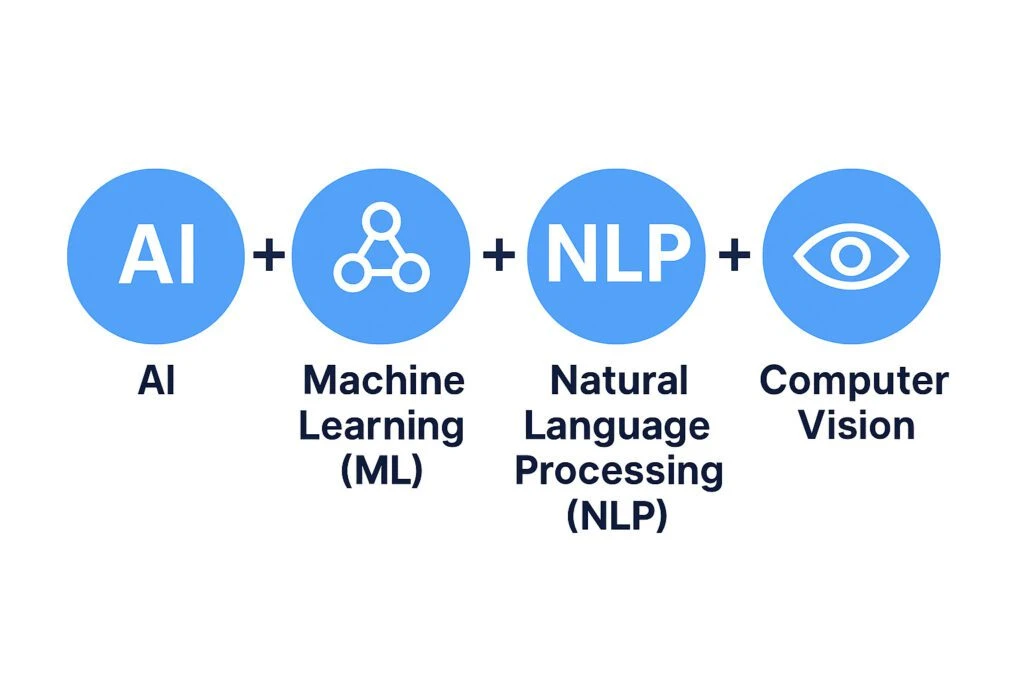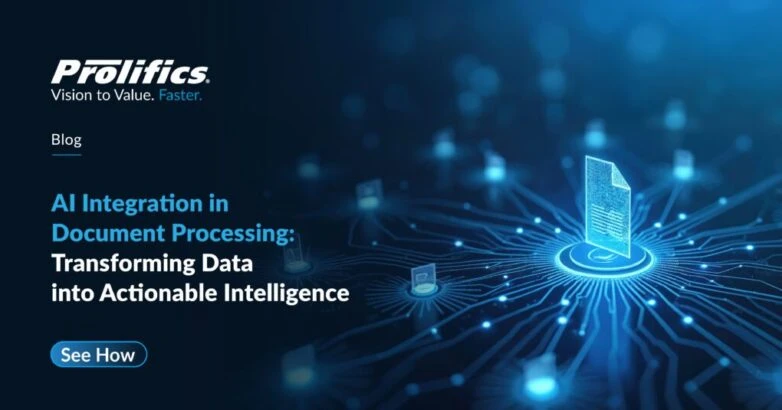The Era of Intelligent Automation Begins
Every organization, regardless of its size or industry, relies on various documents, contracts, invoices, forms, reports, and customer communications. Yet, despite digital progress, a large portion of document handling remains manual. Employees still sift through PDFs, emails, and scanned images to extract key data or validate information. This process is not only time-consuming but also costly and error-prone.
Studies show that employees spend up to 30% of their time managing documents, and manual data entry errors can cost organizations millions annually. That’s where AI document processing steps in, revolutionizing the way enterprises handle unstructured information.
By combining automation with artificial intelligence, businesses are now transitioning from manual to intelligent document processing, empowering teams to work faster, smarter, and more accurately.
What Is Intelligent Document Processing (IDP)?
Intelligent Document Processing (IDP) is a transformative approach that goes far beyond traditional document scanning or Optical Character Recognition (OCR). It leverages AI, machine learning (ML), natural language processing (NLP), and computer vision to read, interpret, and act on data in ways that mimic human understanding.

Put simply, intelligent document processing using AI means your system doesn’t just read text; it understands its meaning, context, and relationships.
These intelligent document processing solutions for enterprises convert large volumes of unstructured data into structured, actionable insights. From extracting customer names and invoice amounts to understanding contract clauses and compliance terms, AI document intelligence enables an organization to make decisions with speed and confidence.
The Building Blocks of AI Document Automation
To understand how AI document automation works, it helps to break it down into its foundational technologies:

- AI Data Extraction:
Using advanced ML models, systems identify and extract key values such as names, dates, or totals, even when formats vary. Unlike rule-based extraction, AI adapts to new layouts and learns from corrections. - Machine Learning Document Analysis:
Over time, ML algorithms learn from user interactions. The more the system processes, the smarter it becomes, improving accuracy in classification and validation. - Natural Language Processing (NLP):
NLP brings context and meaning. It allows systems to comprehend clauses in legal documents or intent in customer communications, not just read words. - Computer Vision:
This technology lets systems analyze scanned or image-based documents, detecting logos, seals, or handwritten text to ensure completeness and authenticity.
Together, these technologies power AI document processing systems that do far more than automate; they reason, learn, and improve continuously.
How AI Transforms Document Processing
AI integration goes beyond OCR, it brings intelligence, adaptability, and automation to every stage of the document lifecycle. Here’s how:
1. Intelligent Data Extraction
AI uses Natural Language Processing (NLP) and Machine Learning (ML) to understand the semantics of text, not just its appearance. It can interpret diverse document types, PDFs, images, emails, and handwritten forms, and extract relevant data fields automatically.
For example, an AI model can detect vendor names, amounts, and payment terms from invoices without predefined templates. This drastically reduces manual effort and accelerates accuracy.
2. Document Classification and Routing
AI classifies incoming documents, such as financial, legal, or HR, and routes them to appropriate departments or workflows. This is achieved through semantic analysis and pattern recognition, allowing the system to adapt over time as new document types appear.
3. Contextual Understanding and Summarization
With Large Language Models (LLMs), AI can read through lengthy documents, summarizing key points or extracting clauses based on intent. For instance, a legal firm can instantly identify risk clauses in contracts or compliance gaps in audit reports.
4. Validation and Data Enrichment
AI cross-verifies extracted data against existing records or external databases. By doing so, it ensures consistency and enriches the dataset, for example, validating customer IDs or flagging discrepancies in purchase orders.
5. Integration with Business Systems
Modern AI platforms seamlessly integrate with ERP, CRM, and ECM systems, ensuring extracted data flows automatically into operational tools such as SAP, Salesforce, or ServiceNow. This eliminates silos and enables end-to-end automation.
Best Practices for AI Integration
- Start with a defined use case – Identify where automation will create maximum value (e.g., invoice processing or compliance review).
- Clean and standardize data – Ensure document quality and consistency before training models.
- Leverage hybrid models – Combine OCR, NLP, and ML for superior extraction and classification accuracy.
- Integrate securely – Use APIs and role-based access to connect AI tools with enterprise systems.
- Monitor and retrain models – Regularly update algorithms based on feedback and new document types.
These practices ensure sustainable adoption and consistent ROI from AI initiatives. To explore how intelligent automation is revolutionizing specific sectors like life sciences, check out our blog on Intelligent Automation in Pharma.
Key Benefits of AI-Driven Document Processing
1. Increased Efficiency and Productivity
AI drastically cuts down the time needed for data extraction and validation. A process that once took hours can now be completed in minutes, allowing teams to focus on higher-value activities like analytics and decision-making.
2. Enhanced Accuracy and Compliance
AI models learn from errors and continuously improve. With built-in data validation and anomaly detection, organizations can ensure compliance with industry standards and reduce regulatory risks.
3. Cost Optimization
By reducing manual effort and error correction, AI integration leads to significant operational cost savings. Companies report up to 60–70% reduction in document-related labor costs.
4. Scalability
AI-based systems adapt to new document formats, languages, and regions, making them ideal for enterprises with global operations. Unlike traditional workflows, AI grows with your business needs.
5. Better Decision-Making
When data becomes structured and searchable, organizations can leverage analytics and AI insights for forecasting, auditing, and customer engagement, turning static documents into actionable intelligence.
Market Insight:
According to IDC, the global intelligent document processing market size was estimated at USD 2.30 billion in 2024 and is projected to reach USD 12.35 billion by 2030, growing at a CAGR of 33.1% from 2025 to 2030, showing clear momentum toward enterprise adoption.
AI in Action: A Prolifics Example
A global financial firm approached Prolifics to automate its loan documentation process, which previously relied heavily on manual review. Using AI document intelligence integrated with workflow automation, the firm achieved:
- 70% reduction in processing time
- 85% accuracy in data extraction from complex forms
- Full compliance with audit and traceability requirements
This case exemplifies how AI document automation enhances both efficiency and governance. It doesn’t replace human expertise; it amplifies it.
The Challenge of Traditional Document Processing
Before AI, document processing was largely dependent on human input or static templates. While optical character recognition (OCR) enabled text extraction from scanned documents, it lacked contextual understanding. Businesses faced several persistent challenges:
- Time-consuming workflows: Manual validation and data entry delay operations.
- High error rates: Even minor human errors led to data inconsistencies and compliance risks.
- Limited scalability: Traditional systems couldn’t adapt to different formats or data structures.
- Lack of contextual insight: Extracted text was not easily searchable, categorized, or actionable.
These limitations underscored the need for smarter, adaptive solutions, paving the way for AI-driven document intelligence.
The Future: Cognitive Document Intelligence
The next evolution is Cognitive Document Intelligence, where systems not only understand but also reason with documents.
Future AI solutions will combine text, image, and voice inputs to analyze business data in real time.
Imagine an AI that:
- Reads contracts
- Compares them to previous versions
- Flags risky clauses
- Suggests revisions — autonomously
That’s the power of AI data extraction and machine learning driving cognitive decision-making in the enterprise.
How Prolifics Can Help
At Prolifics, we empower organizations to unlock the full potential of AI-driven document processing. Our experts integrate AI, ML, and Generative AI into enterprise workflows, helping businesses transform unstructured data into operational intelligence.
With decades of digital transformation experience and partnerships with leading platforms like IBM watsonx, Microsoft Azure AI, and AWS AI Services, Prolifics delivers end-to-end intelligent automation, from design and implementation to governance and optimization.
Whether you’re modernizing legacy document systems, improving compliance accuracy, or seeking faster insights from data, Prolifics ensures a scalable, secure, and future-ready document intelligence framework.




